 by our College Data Analytics Team
by our College Data Analytics TeamBryant & Stratton College - Syracuse North total enrollment is approximately 542 students.
Male/Female Breakdown of Undergraduates
The full-time Bryant & Stratton College - Syracuse North undergraduate population is made up of 70% women, and 30% men.
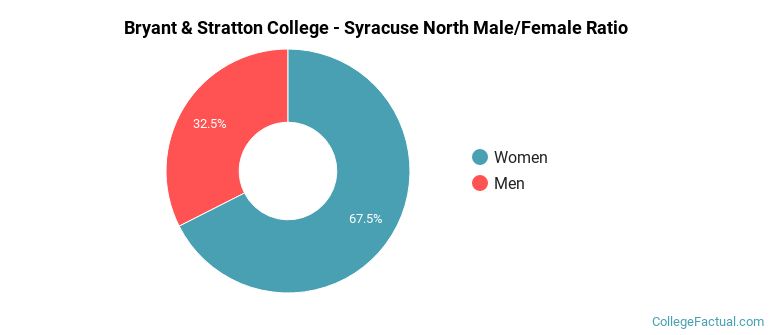
For the gender breakdown for all students, go here.
Bryant & Stratton College - Syracuse North Racial/Ethnic Breakdown of Undergraduates
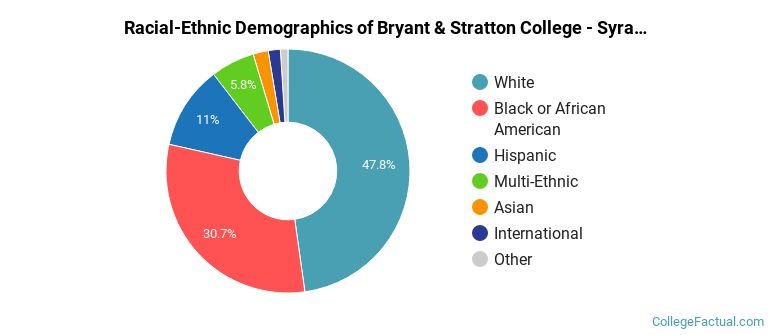
| Race/Ethnicity | Number |
|---|---|
| White | 178 |
| Black or African American | 144 |
| Hispanic | 40 |
| Multi-Ethnic | 13 |
| Asian | 9 |
| International | 5 |
| Native Hawaiian or Pacific Islander | 1 |
| Unknown | 0 |
See racial/ethnic breakdown for all students.
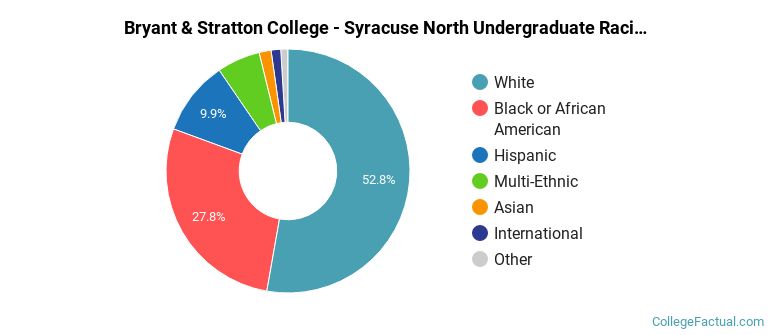
| Race/Ethnicity | Number |
|---|---|
| White | 272 |
| Black or African American | 177 |
| Hispanic | 46 |
| Multi-Ethnic | 23 |
| Asian | 10 |
| International | 5 |
| Native Hawaiian or Pacific Islander | 1 |
| Unknown | 0 |
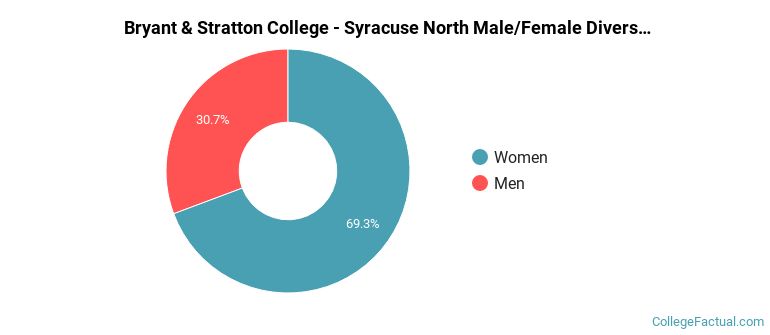
There are approximately 395 female students and 147 male students at Bryant & Stratton College - Syracuse North.
Bryant & Stratton College - Syracuse North ranks 2,025 out of 2,183 when it comes to geographic diversity.
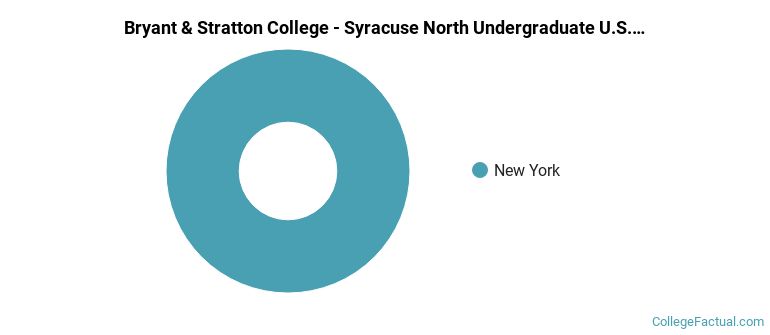
The undergraduate student body is split among 1 states (may include Washington D.C.). Click on the map for more detail.
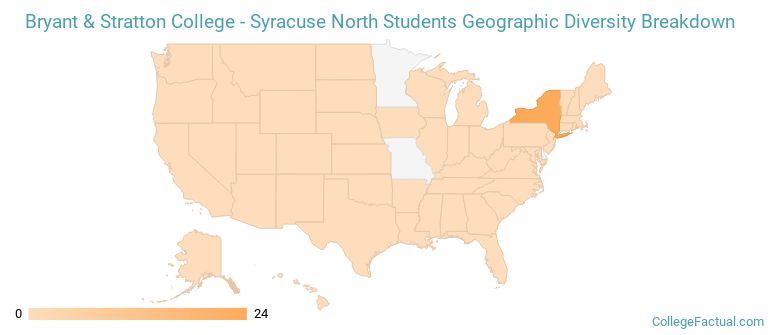
| State | Amount |
|---|---|
| New York | 24 |
| Alaska | 0 |
| Alabama | 0 |
| Arkansas | 0 |
| Arizona | 0 |
Learn more about international students at Bryant & Stratton College - Syracuse North.
A traditional college student is defined as being between the ages of 18-21. At Bryant & Stratton College - Syracuse North, 24.42% of students fall into that category, compared to the national average of 60%.
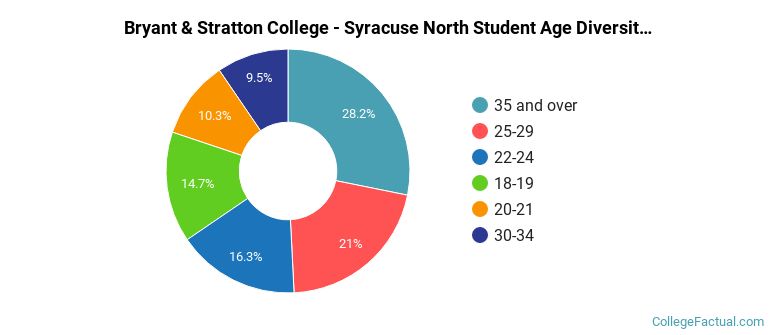
| Student Age Group | Amount |
|---|---|
| 35 and over | 71 |
| 25-29 | 53 |
| 22-24 | 41 |
| 18-19 | 37 |
| 20-21 | 26 |
| 30-34 | 24 |
| Under 18 | 0 |
Footnotes
*The racial-ethnic minorities count is calculated by taking the total number of students and subtracting white students, international students, and students whose race/ethnicity was unknown. This number is then divided by the total number of students at the school to obtain the racial-ethnic minorities percentage.
References
Department of Homeland Security Citizenship and Immigration Services
Find out how College Factual created their Diversity Rankings.